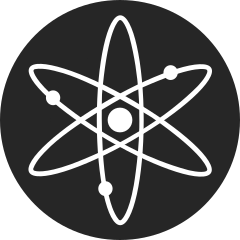Bitcoin, the original blockchain-based cryptocurrency, served as the inspiration for Cosmos, an example of how blockchain technology has developed. The landscape of digital currencies has undergone a variety of creative metamorphoses, and Cosmos, a dispersed network of independent, rival blockchains, best exemplifies this development. These blockchains use Byzantine Fault Tolerant (BFT) consensus algorithms like Tendermint, and Cosmos’ main objective is to address enduring issues with the blockchain ecosystem, such as scalability, usability, and interoperability.
The architecture of Cosmos is a model of forethought in architectural design, allowing for the smooth operation and interaction of numerous blockchains. The network is made up of a number of separate, autonomous blockchains called “zones,” each connected to a central blockchain called the “hub.” The Cosmos Hub, the first blockchain to be released in this ecosystem, takes on the crucial responsibility of controlling the total number of tokens within each zone and coordinating interzone communication. The Tendermint consensus mechanism is used by the hub, while ATOM, Cosmos’ native coin, is used to protect its operations.
Independent blockchains interacting with the Cosmos Hub are represented by the “zones” within the Cosmos network. Each zone has a different consensus algorithm that was carefully chosen to meet the needs of that zone. Through the Cosmos Hub, which guarantees secure token transfers between zones, the zones are able to communicate securely. The Tendermint BFT, a key element of Cosmos’s architectural design, is a software implementation that combines a blockchain’s consensus and networking layers into a universal engine. By enabling developers to concentrate on the development of applications rather than wrangling with the complexities of the underlying protocol, this design paradigm encourages the emergence of additional blockchains and improves the scalability of the Cosmos ecosystem.
One of the foundational components of Cosmos’ interoperability functionality is the Inter-Blockchain Communication (IBC) protocol. With the use of this protocol, many Cosmos zones or blockchains may communicate with one another and transfer assets and data more easily. Each zone keeps a record of the states of the other zones, allowing the system to verify the validity of transactions and avoiding the “silo” problem that plagues modern blockchain architectures.
The Cosmos Network’s native cryptocurrency, ATOM, is endowed with three main purposes. First, holders of ATOM tokens have the option to stake them, which increases network security. These users are granted voting privileges on potential network changes as payment for staking and are rewarded with extra ATOM tokens. Second, holders of ATOM tokens have the option to vote on a range of governance issues, including as adjustments to the network’s specifications. Last but not least, ATOMs serve as a means of exchange for interchain services such token transfers across various blockchains in the Cosmos Network.
Many blockchain networks face a serious challenge with scalability. This problem is addressed by Cosmos by allowing each blockchain in its network to process transactions simultaneously. Given that the network can continuously incorporate new zones, this example of horizontal scalability paves the way for limitless scalability.
Regarding future potential, Cosmos aspires to develop into a “Internet of Blockchains,” offering a framework for various blockchains to communicate with one another while maintaining their independence. This function encourages the creation of cutting-edge cross-chain products and services. For instance, the seamless integration of a financial application on one blockchain with a DeFi protocol on another would allow for the development of unique cross-chain financial products.
A thorough understanding of the tokenomics of Cosmos’s ATOM tokens requires a close look at their responsibilities in the network, how they were initially distributed, and the financial incentives they provide inside the Cosmos ecosystem. Three fundamental use for ATOM tokens on the network. They are mostly employed for staking, which increases the security of the Cosmos network. Holders of ATOM give validators access to their tokens in exchange for them proposing new blocks and approving transactions. By delivering staking rewards—distributed as freshly created ATOM tokens and a fraction of transaction fees—this technique promotes network activity. Second, holders of ATOM tokens receive voting privileges in network governance. They can vote on proposed software upgrades, suggest changes to the network’s settings, and get involved in a variety of community projects. The number of ATOM tokens a holder owns or has delegated determines how much weight their vote has. Finally, within the Cosmos network, interchain services are paid for using ATOM tokens. For instance, transaction fees in ATOM tokens are charged when assets move from one blockchain to another. Following that, validators and delegators receive these fees as compensation for their contribution to network security.
During the Cosmos Network’s fundraising event in April 2017, ATOM tokens were first distributed. During this event, about 168 million ATOM tokens were distributed, with 75% going to fundraiser participants, 10% going to the Cosmos Network development team (All in Bits Inc.), another 10% going to the Cosmos Foundation, and the final 5% going to initial seed investors. The supply of ATOM tokens is not limited, which is significant. Instead, it is planned to gradually rise as a result of the inflationary nature of the staking rewards.
The inflationary process used by the Cosmos network encourages ATOM token owners to stake their tokens. The dynamic annual inflation rate, which ranges between 7% and 20%, varies according to the percentage of ATOM tokens invested in the network. The inflation rate increases to encourage additional users to stake their ATOMs if the proportion of staked tokens is low. In contrast, the inflation rate decreases when stake involvement is high.
In conclusion, Cosmos emerges as a pioneering force in the realm of blockchain technology, aiming to build an interconnected ecosystem of blockchains. Its unique architecture, the integration of Tendermint consensus, the implementation of the IBC protocol, and the strategic use of the ATOM token collectively contribute to creating a scalable, interoperable, and secure network. As the project continues to evolve, the possibilities for cross-chain interactions and applications seem virtually boundless, potentially reshaping the landscape of blockchain technology. This evolution underscores the necessity for expert advice and services to navigate this intricate ecosystem. To ensure you are well-equipped to leverage these advancements, consider enlisting the expertise of Businessplugs. With a comprehensive suite of services tailored to decentralized finance and cryptocurrency needs, Businessplugs is primed to guide you through the ever-evolving world of blockchain technology.






